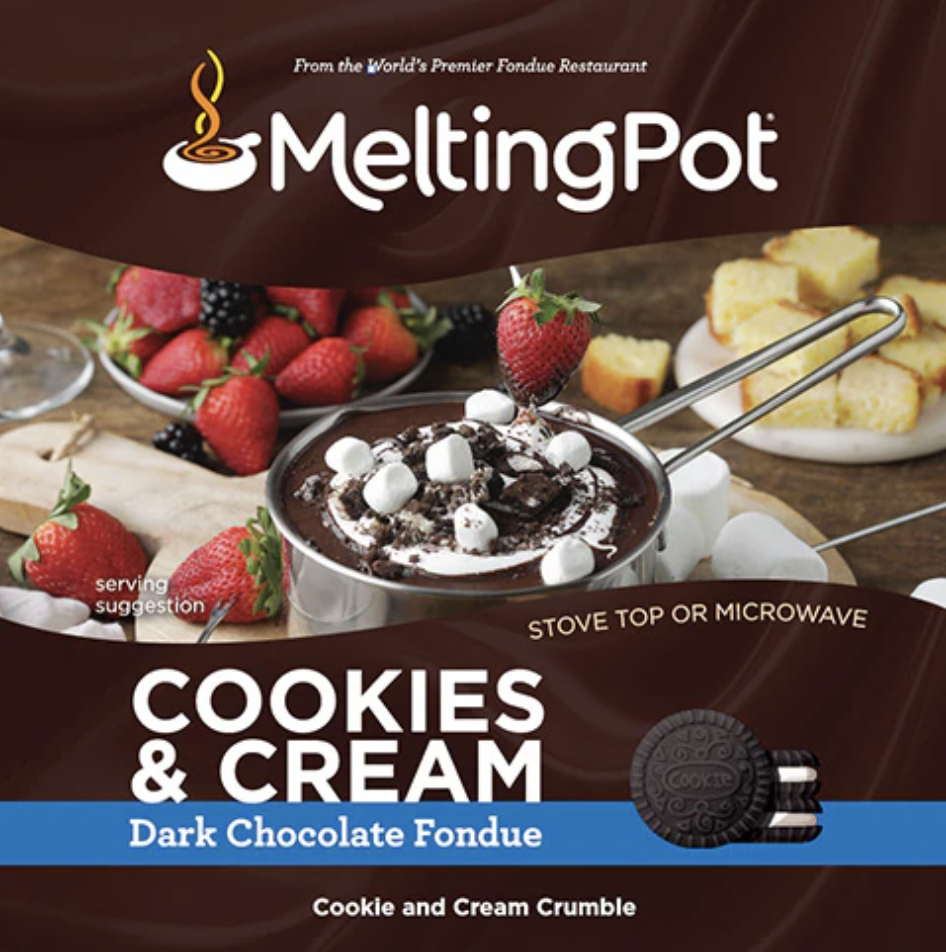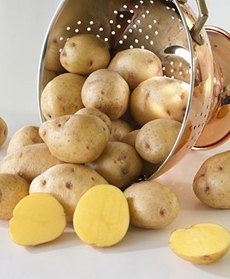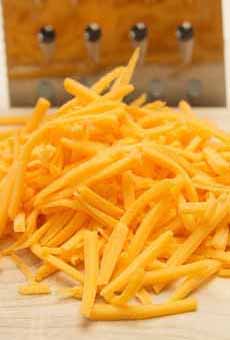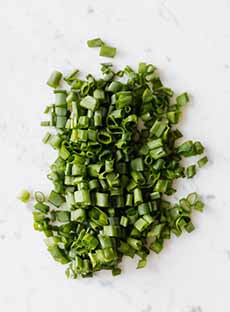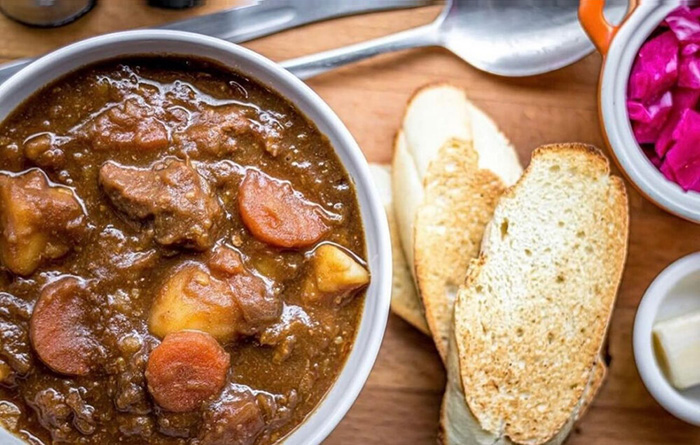|
February 1st was International Furmint Day. The month is designated Furmint February. But what is Furmint*, many might ask?
It’s a white grape from Hungary, made into a noteworthy white wine.
We knew Furmint as the main white wine grape used in the grape blend for Hungarian’s famous Tokaji (Tokay), but we’d never had any that was bottled as a single varietal.
So we set out to find a few well-regarded to taste with wine friends at a weekend dinner.
This turned out to be a challenge, since Furmint wines appear to be quite rare in the U.S. We ended up buying them online.
So white wine lovers: Let’s all do our part. Try it, share it, and get sales up so more people can get to know this food-friendly, affordable wine.
It’s not a wine that gets much attention in the U.S. Furmint (FUR-mint) is important enough that the world’s best wineglass maker, Riedel, has designed a glass for it (photos #9 and #10).
Before we go further, a bottle of Furmint and a set of glasses would make a welcome gift for a wine connoisseur (by which we mean students of wine as well as experts).
An overview of Furmint (FUR-mint) follows. Also below:
> The history of Furmint.
> The year’s 40+ white wine holidays.
> The white wine varietals.
Also on TheNibble.com:
> All the red wine holidays.
AN INTRODUCTION TO FURMINT
From Hungary’s Tokaj region, Furmint is a white grape variety most famously known for its role in producing the prized Tokaji Aszú† (TOE-ky ah-ZU) sweet wines from the region. Nobles from all over Europe became fans, with King Louis XIV of France calling it the wine of kings.
Its high acidity and sugar content make the grape perfect for sweet wine production. It’s also thin-skinned and susceptible to the noble rot†, the mold Botrytis cinerea (photo #7).
Botrytis cinerea attacks the grapes and sucks out moisture, which concentrates the grape’s sugars and flavors into a honeylike sweetness and complexity.
Botrytised wines are the apex of sweet wine production, sought after by many for their lush, rich, intense sweetness.
Tokaji Aszú is one of the most famous dessert wines in the world. Like Sauternes, the botrytis brings out complex flavors of honey and apricot; and in the case of Tokaji Aszú, Furmint’s intense minerality as well.
Thus, while traditionally associated with sweet wines, many Hungarian winemakers now produce excellent dry Furmint wines. Food-friendly and refreshing, with high acidity and high minerality, wine aficionados now have the chance to discover dry Furmint.
While our focus here is dry Furmint, let’s start by defining the different types of Furmint wines.
Four Styles Of Furmint Wines
Dry Furmint: These wines are crisp, with high acidity and minerality—like Chablis but with even more acidity. Their minerality is different from Chablis also, often described as having a smoky, flinty quality from the volcanic soils of the Tokaj region, while Chablis has a distinctive “chalk and seashell” minerality from limestone soil that’s rich in clay and marine fossils.
Food Pairings: Lighter fruit desserts, blue cheese, foie gras, or as an aperitif. Their fruit gives notes of citrus, green apple, and pear. There are more detailed pairings in the next section.
Sparkling Furmint: The sparklers are made in mostly dry (brut) style, although some may have a touch of residual sugar. Winemakers often use the méthode traditionnelle of Champagne. A bubbly version of dry Furmint, they are crisp and refreshing. Enjoy them as an apéritif, and with seafood, fried dishes, and soft cheeses.
Food Pairings: As with other sparkling wines: caviar, fresh goat cheese, double-cremes and triple-cremes; shellfish (lobster, oysters, scallops, shrimp); sushi and sashimi, smoked fish.
Late Harvest Furmint: This is a sweeter style of Furmint, but lighter than and not nearly as intense as Tokaji Aszú. The grapes are overripe since they are harvested later and there may be a slight amount of botrytis. Its vibrant acidity balances the sweetness.
Food Pairings: The pairings are the same as for sweet Furmint and Tokaji Aszú. See them in the footnote†.
Sweet Furmint: These are sweet wines made from Furmint, but not necessarily in the manner of Tokaji Aszú. The latter is a specific type of sweet wine made under strict regulations. In other words, while all Tokaji Aszú is made from sweet Furmint, not all sweet Furmint wines are Tokaji Aszú. While the latter are often 60-80% Furmint, winemakers blend in other grapes for added complexity. See the footnote††.
Food Pairings: The pairings are the same as for sweet Furmint and Tokaji Aszú. See them in the footnote†.
These sweet wines are glorious and worth the splurge with the right foods.
PAIRING DRY FURMINT & FOOD
The key to pairing food with dry Furmint is to work with its high acidity and complex mineral character. That’s pretty easy with everyday favorites such as:
Asian foods: from sushi/sashimi and stir fries to the spicier fare of China, India, and Thailand.
Comfort foods: mac and cheese, turkey burgers/cheeseburgers, cheese fondue or other melt.
Fried foods: fried chicken, French fries, fish and chips.
Grilled and roasted foods: chicken, fish, seafood, veggies.
Other favorites: barbecue (with a tangy rather than sweet sauce), Buffalo wings.
Pasta: aglio e olio, cacio e pepe, linguine with clam sauce, pasta primavera, pesto—basically, anything not in a red sauce or a cream sauce (like Fettuccine Alfredo).
Pizza: arugula, clam/seafood, Margherita, mushroom/truffle, white pizza.
Pork: chops or roasts, particularly when prepared with apples or other fruit
Vegetarian dishes: avocado toast, salads (especially with cheese like Caesar, Caprese, Cobb, and goat cheese.
THE HISTORY OF FURMINT WINE
A wild grape native to Hungary, Furmint has been cultivated in the Tokaj-Hegyalja wine region for centuries, with documented mentions dating back to the 16th century, during tumultuous period of the Ottoman occupation (1541 to 1699 C.E.).
Ampelographers** believe that it is highly probable that the grape originated there.
Furmint’s use in Tokaji dessert wines has its first known reference 1635, describing a full-bodied sweet dessert wine made from late-ripened grapes affected by Botrytis cinerea (noble rot).
Although it was still a dangerous frontier zone exposed to frequent raids, during the Ottoman occupation the Tokaj wine region remained unoccupied and became a sanctuary for wine production and cultural preservation.
The Wine Of Kings
Tokaji Aszú, the sweet wine made from Furmint, gained international acclaim quickly. In the 17th century, it was known as the “wine of kings, king of wines,” a phrase famously attributed to King Louis XIV of France, a lover of Tokaji wines.
This reputation spread across European royal courts, making it a prestigious quaff among nobility.
The unique wine-making process involved hand-picking individual botrytized grapes from the cluster, a labor-intensive method that made the wine extremely expensive and rare (not all grapes in a cluster would get botrytis).
In 1737, the Tokaj wine region became the world’s first classified wine region, predating the Port wine region (Douro Valley, Portugal) in 1756. The famed classification of Bordeaux did not happen until 1855.
The sweet wine was well established by the late 18th century when, in 1796, the Hungarian politician János Dercsényi described Furmint as the “genuine Tokaji Aszú” grape [source].
During the Austro-Hungarian Empire (1867 to 1918), Tokaji wines became known as a national treasure and were often used as diplomatic gifts
The phylloxera epidemic that began in 1863 and lasted for decades nearly destroyed Hungarian vineyards (as well as those in other parts of Europe, Australia, South Africa, and California, as the insect spread).
The recovery was slow, and wine production in Europe was further disrupted by the two World Wars and communist era.
While Tokai was produced then, quality was often sacrificed.
After the fall of communism in 1989, Hungarian winemakers began reviving traditional Furmint production techniques. They started focusing on both the traditional sweet styles and exploring dry Furmint wines, which have gained significant international recognition in recent years.
The Emergence Of Dry Furmint Wines
While Hungary has been producing dry Furmint wines for centuries, it was in small quantities for local consumption. The main focus was where the money was: in the world-famous Tokaji Aszú.
Dry furmint became widely recognized and commercially significant only recently, in the late 20th and early 21st centuries.
In the 1990s, after the fall of communism, Hungarian winemakers began experimenting more with dry Furmint, influenced by international demand for food-friendly dry white wines.
By the early 2000s, top producers like István Szepsy (Szepsy Winery), Disznókő, and Királyudvar began making high-quality dry Furmint wines, proving its potential beyond sweet wines.
Since then, Tokaj and other regions have developed crisp, mineral-driven dry Furmints, gaining international recognition.
Dry Furmint is now considered one of Hungary’s flagship white wines, enjoyed both domestically and internationally, with styles ranging from fresh and citrusy to rich and oak-aged.
They have caught the eye of winemakers in other countries. Plantings appeared in the neighboring countries of Austria and Slovenia.
There are small plantings in California, Australia, and South Africa as small winemakers experiment with what the grape might do in their regions—where the climate is very different from southern Hungary’s.
The Name “Furmint”
The origin or etymology of “furmint” is not entirely certain, but here are the leading theories—for which there is no evidence:
The “Froment” (Wheat) Theory: Some believe that furmint may derive from the French word “froment,” meaning wheat and referring to the grape’s yellowish, wheat-like color when ripe. However, there is no historical link between furmint and French viticulture.
Central European Roots: Some believe the name originated in a local or regional dialect††. But again, no definitive evidence, nor is there a connection to any Austrian or German words related to winemaking.
The truth is out there…somewhere.
|
|

[1] A dry Furmint from István Szepsy’s Szepsy Pince (cellar or winery). One of the greatest winemakers in the history of Hungary, Szepsy was instrumental in reviving Tokaj’s reputation post-communism. He was one of the first to refocus on making high-quality dry Furmint wines in addition to the traditional sweet wines. The Szepsy family has been making wine in Tokaj since the late 16th century (photo © 9 Elms Wines).

[2] The first records of Disznókő vineyards, one of the most renowned wineries in Tokaj, date back to 1413. By the 18th century, the estate was recognized as a premier Tokaji vineyard. Its modern revival began in 1992, when it was acquired by the French company AXA Millésimes, a wine investment group that restored the winery, modernizing production (photo © Disznoko).

[3] See the difference in color between the dry Furmint above and this late harvest Furmint, the result of the concentration of sugar and aging (photos #3, #4, #6, and #7 © Disznoko Tokaj | Facebook.

[4] Sparkling Furmint.

[5] Tokaji Aszú, the king of wines or wine of kings (photo Best Of Hungary).

[6] A cluster of furmint grapes, just snipped from the vine.

[7] Grapes attacked by Botrytis cinerea mold dry out like raisins. This concentrates the flavor.

[8] This dry Furmint celebrates the beloved Hungarian Vizsla, one of whom was evidently an army officer. It’s inexpensive and the label makes it a best-seller Here’s more about the wine (photo © Vivino).

[9] The world’s first Furmint glass was designed by the world’s leading wine glass maker, Riedel (photos #8 and #9 © Furmint Glass).

[10] Gift a box of two Furmint glasses along with a bottle of furmint.
|
|
A YEAR OF 40+ WHITE WINE HOLIDAYS
|
|
January
January 10: Champagne And French Fries Day
February
February: Furmint February
February 1st: National Furmint Day
February 18th: National/Global Drink Wine Day
Last Saturday in February: Open That Bottle Night
March
March 3rd: National Mulled Wine Day
March 13th: National/International Riesling Day
March 21: World Vermouth Day
April
Last Friday in April: National Viognier Day
May
First Friday in May: International Sauvignon Blanc Day
May 9th: National/World Moscato Day
May 16th: International Ezerjó Day
Thursday Before Memorial Day: National/International Chardonnay Day
May 25th: National Wine Day
June
June, Second Week: National Prosecco Week
June, Second Thursday: World Verdejo Day
June, Second Saturday: International Drink Chenin Blanc Day
June 13th: National Rosé Day (alternately celebrated the Fourth Friday in June)
June 20th: Drink Chenin Blanc Day (the grape in Vouvray and Quarts de Chaume)
June, 3rd Saturday: English Wine Week Begins
June, 4th Friday: International Rosé Day
|
July
July, First Week: Sparkling Wine Week
July 3: American Sparkling Wine Day
July 12: International Cava Day
July 25th: National Wine and Cheese Day
August
August 1: Old Vine Day
August 1st: International Albariño Day
August, First Week: Albariño Week
August 4th: National White Wine Day
September
September 1st: International Cap Classique Day
September 9th: International Box Wine Day
October
October 6th: National Orange Wine Day
October 7th: Mexican Wine Day
October 22nd: Austrian Sekt Day
October, Fourth Friday: National Champagne Day‡
December
December 5th: Prohibition Repeal Day
December 10th: International Tokaji Aszú Day
December 16th: International Pinot Meunier Day
December 20th: National Sangria Day
December 31st: Champagne Day (New Year’s Eve‡)
Plus 3 Rosé Holidays
February 5th: National Rosé Day in Australia and New Zealand
June, 2nd Saturday: National Rosé Day***
June, 4th Friday: National Rosé Day***
July: Dry July
|
|
WHITE WINE VARIETALS TYPICALLY AVAILABLE IN THE U.S.
|
|
Albariño
Aligoté
Alvarinho (Vinho Verde)
Chenin Blanc
Colombard
Fumé Blanc
Furmint
Gewürztraminer
Grüner Veltliner
Malvasia
Marsanne
Moscato
Müller-Thurgau
Muscadelle
|
Muscadet
Muscat
Pinot Blanc
Pinot Gris/Pinot Grigio
Riesling
Sauvignon Blanc
Sémillon
Seyval Blanc
Silvanio
Trebbiano
Verdicchio
Viognier
Vouvray
|
________________
*Furmint is capitalized because it is named after a grape variety, not a geographic location. This is in line with the style guidelines followed by the Associated Press and The New York Times. Wines that are not named after the type of grape are not capitalized, such as rosé and sherry.
**Ampelography is the science of identifying, naming and classifying cultivated grape varieties through detailed analysis of the unique characteristics of the plant.
***There are three rosé holidays. JThe second Saturday in June holiday was founded in 2014 by Bodvár House of Rosés, a Swedish brand, as a U.S.-focused promotional holiday. The fourth Friday in June, International Rosé Day, was established in 2018 by the Provence wine region in France, which is essentially the global home of rosé.
†Tokaji Aszú is a sweet dessert wine made primarily from botrytized grapes. Botrytis, a fungus, leaches moisture from the grapes, drying them out, which concentrates the sugars and flavors (photo #7). Hence the nickname, noble rot. Aszú means “dried.” Note that while botrytis is often referred to as “gray mold,” mold is a type of fungus. While the mold first appeared spontaneously in warm, humid conditions, winemakers can now use techniques to encourage its growth.
When pairing foods with Aszú,the rich, lusciously sweet, high-acid wine making is a versatile pairing wine that works well with sweet, salty, spicy, and umami-rich dishes.
>Cheese Pairings: blue cheeses (Roquefort, Stilton, Gorgonzola), aged Cheddar or Comté, goat cheese.
>Savory Pairings: foie gras, duck à l’orange, honey-glazed ham, roast pork with apples, spicy Asian cuisine (Indian, Szechuan, Thai).
>Dessert Pairings: fruit tarts (apple, apricot, peach, pear), crème brûlée, nut or spice cakes (gingerbread, hazelnut, walnut).
>Snacks: dark chocolate with sea salt, dried fruits and nuts (almond, apricots, figs, walnuts), (Figs, Apricots, Almonds, Walnuts) – A simple yet elegant match.
††The other Hungarian grapes that can be used in a Tokaji blend, hárslevelű and sárga muskotály for added complexity, zéta and kövérszőlő for aroma, and kabar for richness and depth.
‡There are two Champagne Days. The first, celebrated on the fourth Friday of October, was created in 2009 by Chris Oggenfuss, a California wine educator. The second, on New Year’s Eve, grew organically.
‡‡Cap Classique is a term used in South Africa for méthode traditionelle sparkling wine production. This is the same technique used in Champagne, a labor-intensive process where wine undergoes a secondary fermentation inside the bottle, creating the bubbles.
CHECK OUT WHAT’S HAPPENING ON OUR HOME PAGE, THENIBBLE.COM.
|

























